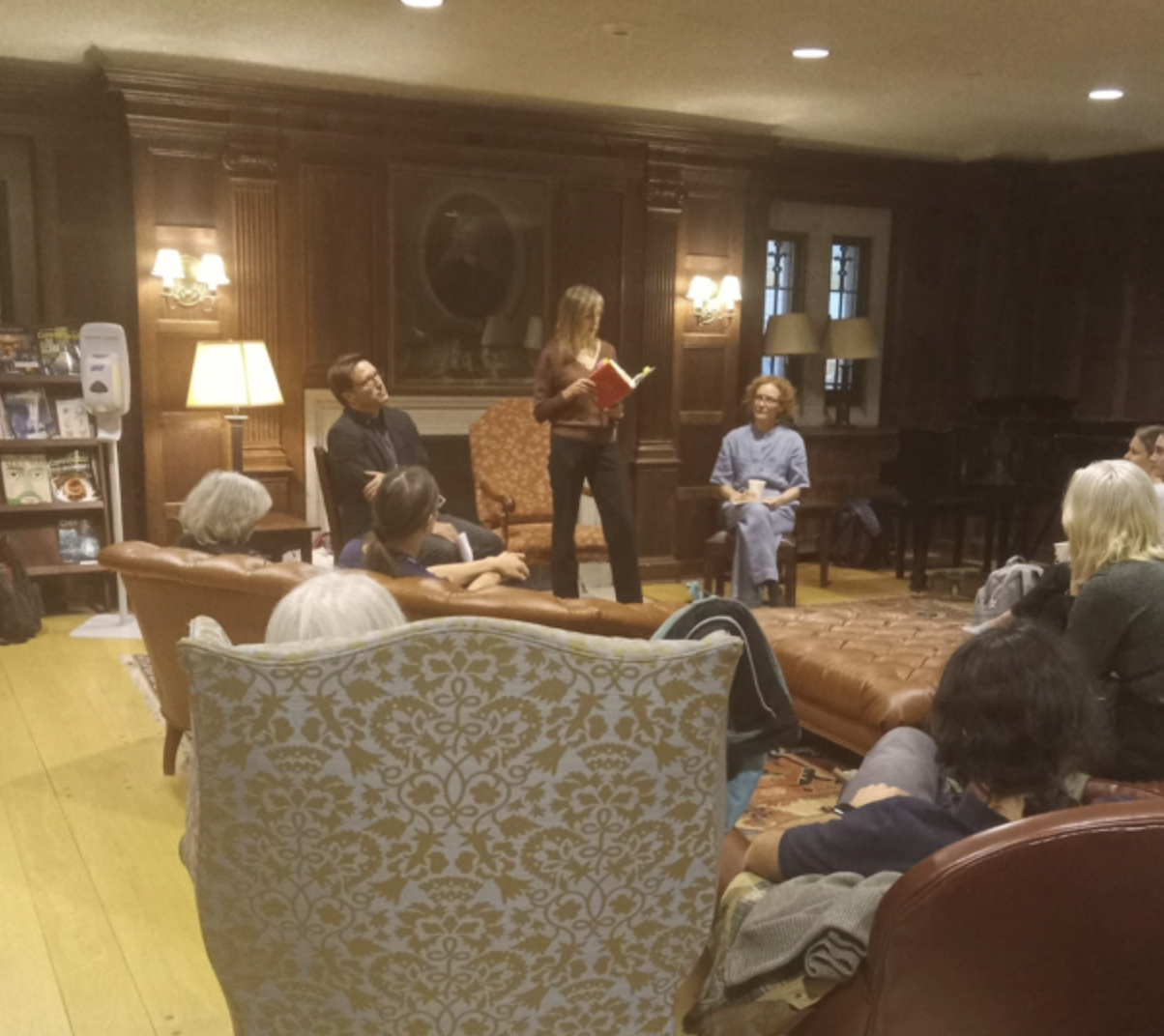
Ilana Zaks, Contributing Photographer
On Wednesday, Nov. 9, Emily Coates and Brian Seibert – two faculty members from Yale College Theater and Performance Studies – hosted a Trumbull College Tea with dance critic Jennifer Homans.
The talk — taking place in Trumbull College’s common room — was about Homans’ new book, “Mr. B,” a biography of iconic Russian ballet choreographer George Balanchine. With many dancers and non-dancers in attendance, the audience listened to Homans talk about the iconic choreographer George Balanchine, also known as “Mr. B,” who co-founded the New York City Ballet and choreographed some of the most important ballets of the 21st century.
“Balenchine was present in anecdotes, in the images and in technical details,” said Coates, who also danced at New York City Ballet between 1992 and 1998. “But I couldn’t believe the details I was reading that I didn’t know.”
Jennifer Homans is a dancer, historian, author and dance critic. Before beginning the conversation, Homans read her new book’s introduction, “Dead Souls,” a general description of Balanchine’s life and career. Capturing the most peculiar characteristics of the Russian choreographer in such great detail, the passage familiarized the audience with the pivots of Balanchine’s life, including his many “near-death experiences” in two world wars, and prevalent themes of dance, love, art, philosophy, illness and sex.
“He almost dies, many times. Everything falls apart, many times,” Seibert said to laughter from the audience. “As Emily and I were corresponding about it, we both got to the end and we didn’t want it to end – which is an insane thing to say about a 600 page book.”
In the courageous task of writing a biography about one of the last important and controversial choreographers, Seibert — a New York Times and New York Magazine dance critic — raised the first question.
“How did you do it?” he said.
Homans began accounting for the ten years she spent down “the rabbit hole” of George Balanchine’s memories. When she embarked on her writing process, Homans had realized that a large portion of the most significant people involved in Balanchine’s life, including his dancers, were alive. Without wasting any time, she began her research by interviewing them: from oldest to youngest.
Coates asked for Homans to elaborate on her uncanny ability “to be in [Balanchine’s] mind.” Homans addressed this question stating that she desired to see, more closely, how Balanchine acted, lived and thought. Balanchine was an avid reader, so she read what he read. She visited the places he lived in.
Homans remarked that she has been through a great span of archives from Balanchine’s passionate love letters addressed to his third wife to fragments of his notes that, to her surprise, included quotes from the philosopher Baruch Spinoza.
Homans then recalled her discovery of how Balanchine’s approach to dance was influenced by Spinoza’s philosophy, which claims God to be in nature, the body and everything. Considering the extremely religious background of Balanchine’s upbringing that looks down upon dance, Homans described this outlook as granting Balanchine “a sense of connection that what he was doing was godliness.”
After a long deliberation on the role of religion and philosophy in Balanchine’s life, the conversation turned from the spirit back to the body, and Homans addressed another prominent topic in the book — Balanchine’s complicated relationship with his dancers, which involved varying levels of intimacy, sexuality, and professionalism.
At the end of the talk, students were given the chance to ask their own questions to Homans. Homans remained after the talk for further questions from attendees.
The next Trumbull Tea will take place on Nov. 10, 2022, at 4 p.m. with Adriane Jefferson.







